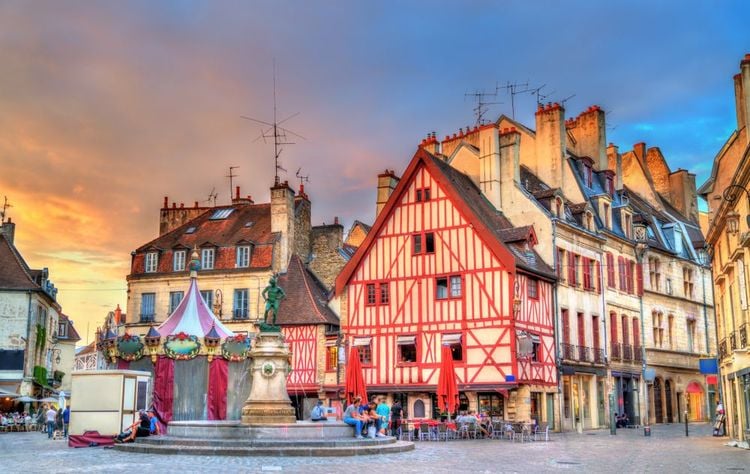A trip to Dijon can start with a visit to the church of Notre-Dame de Dijon, which has been attracting visitors for decades. Listed as a UNESCO World Heritage Site since 2015, the monument is an architectural feat. Today, the building is considered a true masterpiece of Gothic art. Dating back to the 13th century, the church of Notre-Dame de Dijon stands next to the Palace of the Dukes of Burgundy, with the chapel of the Assumption and the sacristy attached to it.
The churches of Notre-Dame de Dijon and Saint-Michel de Dijon are two of Dijon's best-known and most beautiful French monuments. While the former shines for its age, the latter is emancipated by its architecture, which stems from different movements, creating a structure in its own right. Notre Dame de Dijon has been a UNESCO World Heritage Site since July 2015, and the church of Saint-Michel has been a historic monument since 1840. These two buildings, nestling in the heart of Dijon, are true testaments to the passage of time, and are sure to delight youngsters, history buffs, architectural admirers and the simply curious. If you're coming to the city for a holiday, you'll be spoilt for choice when it comes to places to visit. Both buildings are open all day, so there's no need to queue for hours to get a ticket. We take a closer look at these two holy places steeped in history.
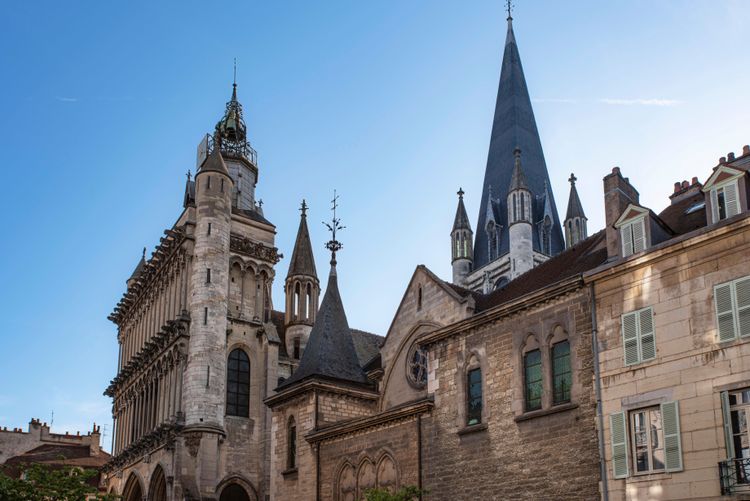
Notre-Dame church in Dijon
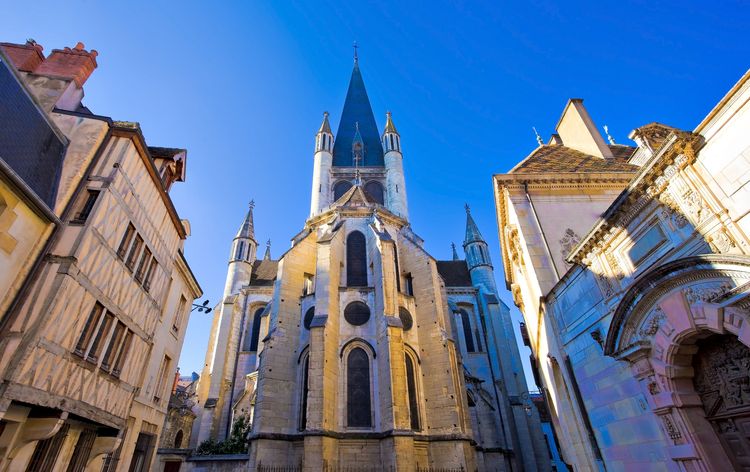
Notre-Dame de Dijon church.
- © andre quinou / ShutterstockThe church of Notre-Dame de Dijon stands on a site previously used for the chapel of Sainte-Marie, built around 1150 in the Romanesque style outside the town as an archive. It was replaced by the church we know today, Notre-Dame de Dijon, in 1220.
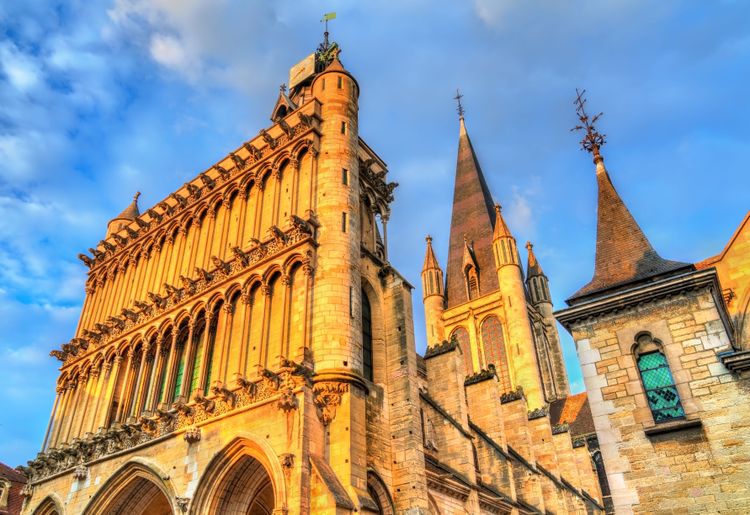
The façade of Dijon's Notre-Dame church.
- © Leonid Andronov / ShutterstockThe particularity of this church is that the weight of its roof does not rest on buttresses, as in most of these buildings, but on pillars. Admired over the centuries by Vauban and Eugène Viollet-le-Duc, Dijon's Notre-Dame church was first restored in 1865. The work lasted until 1884, the main aim being to return the church to its original appearance, while every damaged sculpture was restored. Finally, Notre-Dame de Dijon is also famous for the fifty-one gargoyles that dot its façade.
The interior of Notre-Dame de Dijon
This church is open to the public and can be visited at any time of day. While its exterior architecture is impressive, the interior of the cathedral is just as impressive. The plan of the monument follows a classic cross-shaped layout, with a porch preceding the nave. On the upper level, you can admire a vast gallery, with numerous pillars in its centre. Forming a corridor, you'll have the chance to take in some of the stained glass windows here and there, each giving off a different hue.
Testimonial
"Just magnificent, superb lantern tower at the crossing of the transept, impressive church, it's a shame there isn't enough distance to admire the whole building. Don't miss the famous lucky owl carved on one of the walls on the north side of the church.
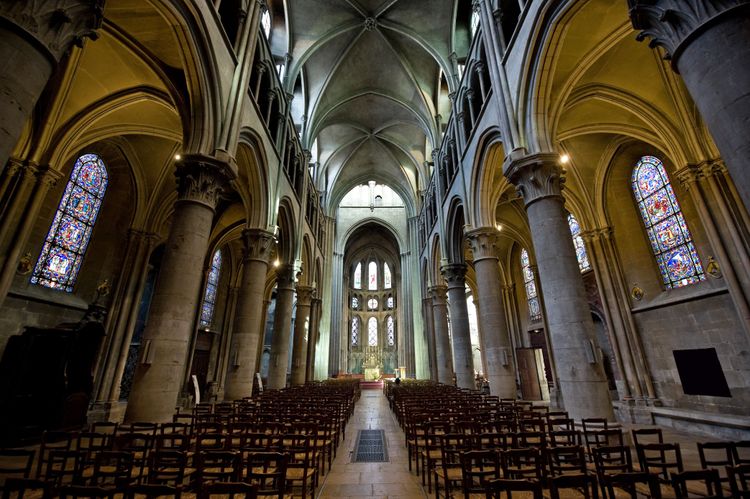
The interior of Dijon's Notre-Dame church
- © Claudio Giovanni Colombo / ShutterstockSome of them date back to 1235 and can be seen in the north transept. They depict the life chapters of Saint Peter and Saint Andrew. The other stained glass windows date back to 1874, when a glass painter undertook to make fifty-eight of them for the church of Notre-Dame de Dijon.
The church of Saint-Michel in Dijon
Exterior details
It's hard to imagine that this was originally a simple wooden chapel. As the number of worshippers grew, the building became too small to accommodate them all. If you love architecture from a bygone era, you'll need to visit this place to appreciate the extent of its beauty. It is one of the most beautiful religious monuments in France.
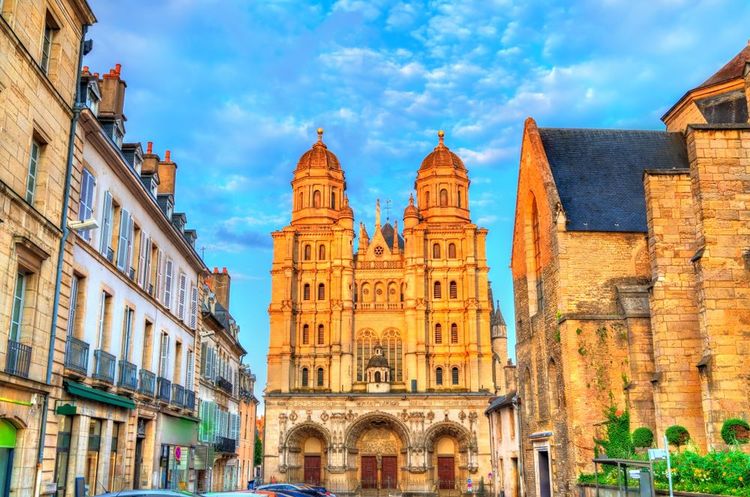
Saint-Michel church, Dijon, France
- © Leonid Andronov / ShutterstockArchitectural diversity
The church of Saint-Michel in Dijon was enlarged around 1497. Work was undertaken at the time, while a number of wealthy families had chapels built at their own expense. Between 1537 and 1763, the south port, the central portal, the towers of the west facade, the top of the towers and the sacristy were built.
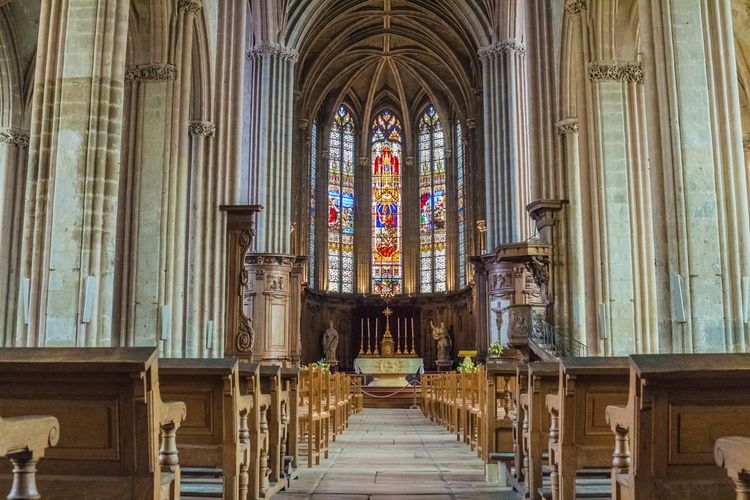
The nave of Saint-Michel church in Dijon, France.
- © John_Silver / ShutterstockA gourmet dinner
For an exceptional dinner, L'un Des Sens is one of the city's most popular gourmet restaurants. The restaurant has retained its old-world charm, with ashlar walls and exposed wooden beams. A modern touch has been added to this charming house decor, with pretty tables and contemporary chairs. The cuisine is not to be outdone, with chef Sébastien Mortet, a native Burgundian, a meticulous enthusiast who prepares recipes with plenty of pizzazz.
 Dijon
Dijon
